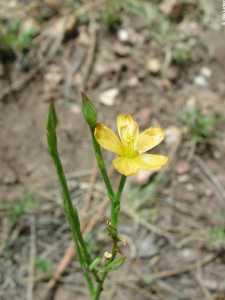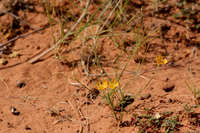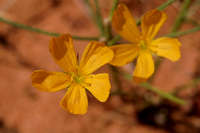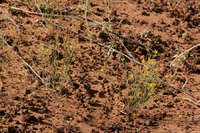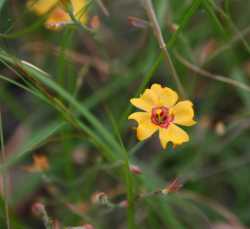Duration: Annual
Nativity: Native
Lifeform: Forb/Herb
General: Annual or short-lived perennial herbs, 6-30 cm tall, from a taproot; stems slender, erect and branching throughout; stems and pedicels glabrous or nearly so, the angles usually narrowly thin-winged.
Leaves: Alternate, sessile, and appressed-ascending; blade narrowly linear, 5-15 mm long and less than 1 mm wide, with a pointed tip.
Flowers: Yellow, small but showy, usually solitary at branch tips; sepals 5, narrow and awn-tipped, 5-9 mm long; petals 5, yellow to yellow-orange, 7-12 mm long, deciduous; styles 5-7 mm long.
Fruits: Capsules ellipsoid, 4 mm long, somewhat shorter than the sepals.
Ecology: Found in dry sandy places, from 4,000-8,000 ft (1219-2438 m); flowers March-September.
Distribution: CO to w TX, NM, and AZ; south to MEX.
Notes: The keys to this species are the orangish-yellow 5-petaled flowers; the stems which branch near the base of the plant and also near the top; the styles, which are 5-7 mm long and united, appearing to be one style with several small lobes at the top; and the hairless stems and pedicels. L. australe is similar but the stems are scabrous near the base (covered with short, rough hairs; use your hand lens); mostly branching above the middle or not at all; and the styles are shorter, 2-4 mm long, also united into one stalk as in L. aristatum.
Ethnobotany: The Navajo used it as a hemostatic.
Etymology: Linum comes from linon, the Greek name for flax; aristatum means with a long, bristle-like tip, referring to the awn-tipped sepals.
Synonyms: Cathartolinum aristatum
Editor: LCrumbacher 2011, AHazelton 2017



